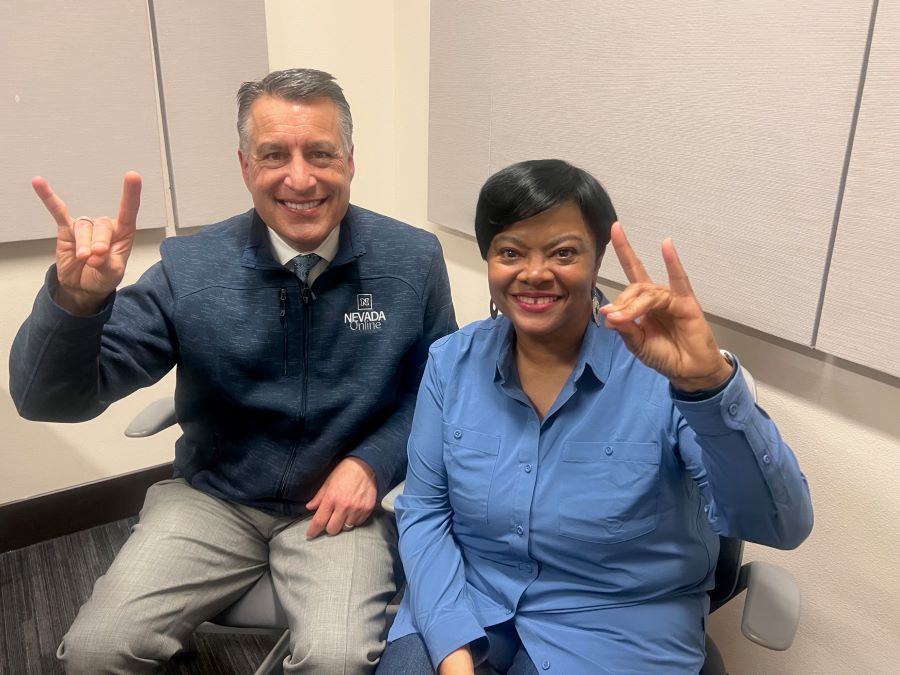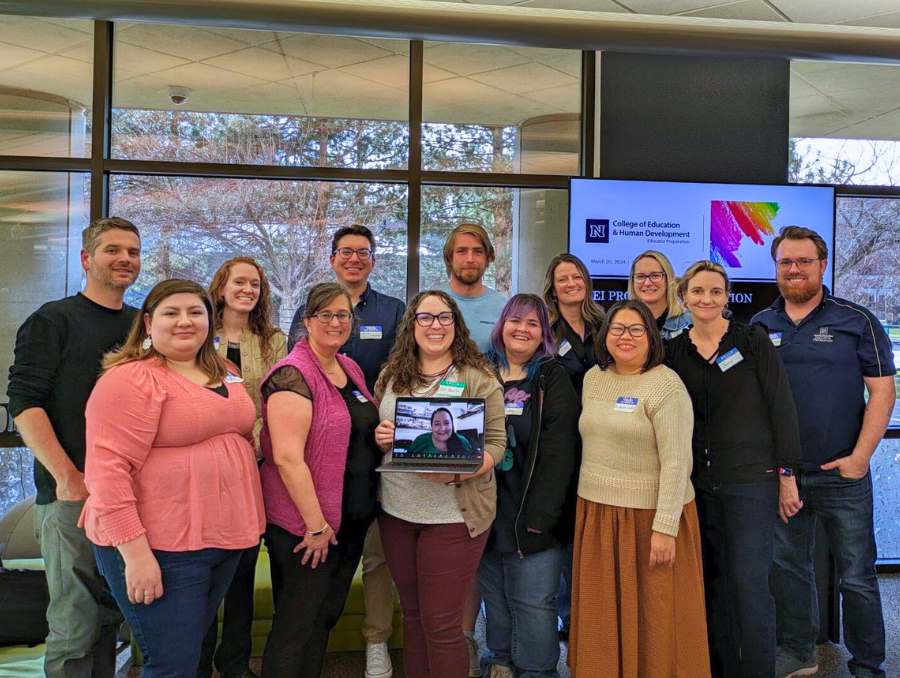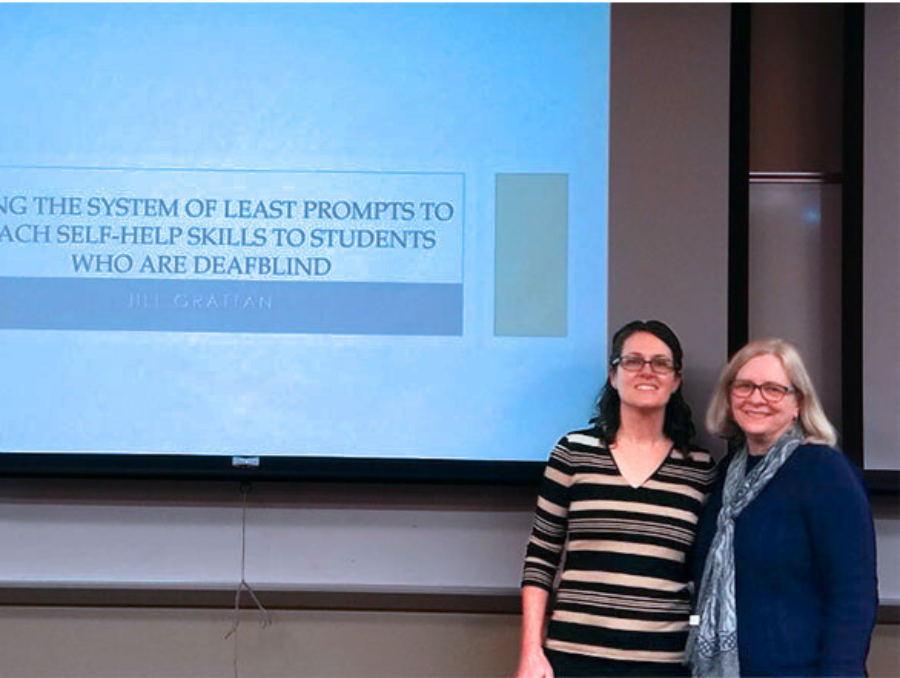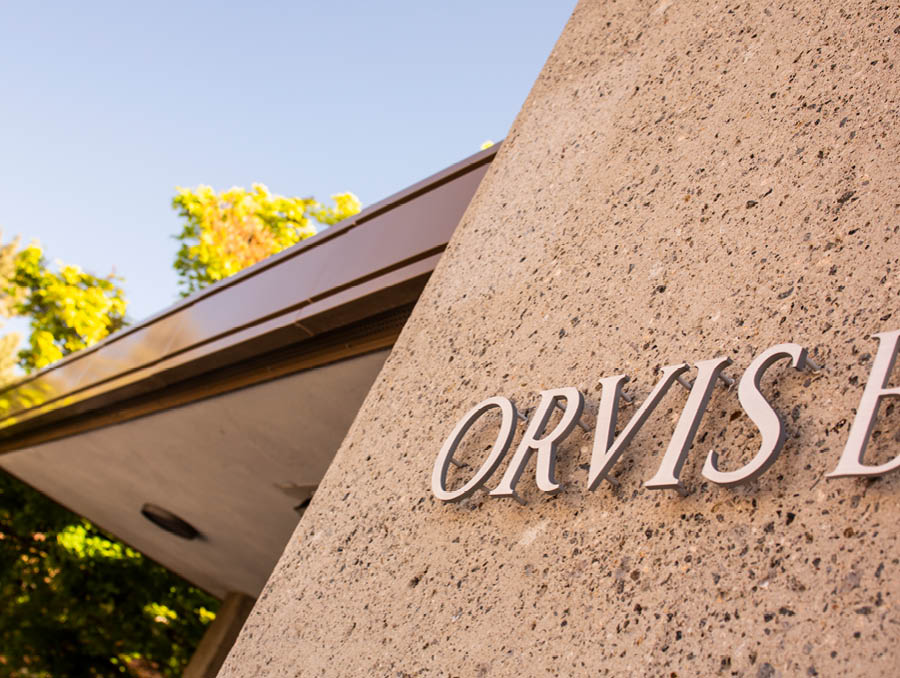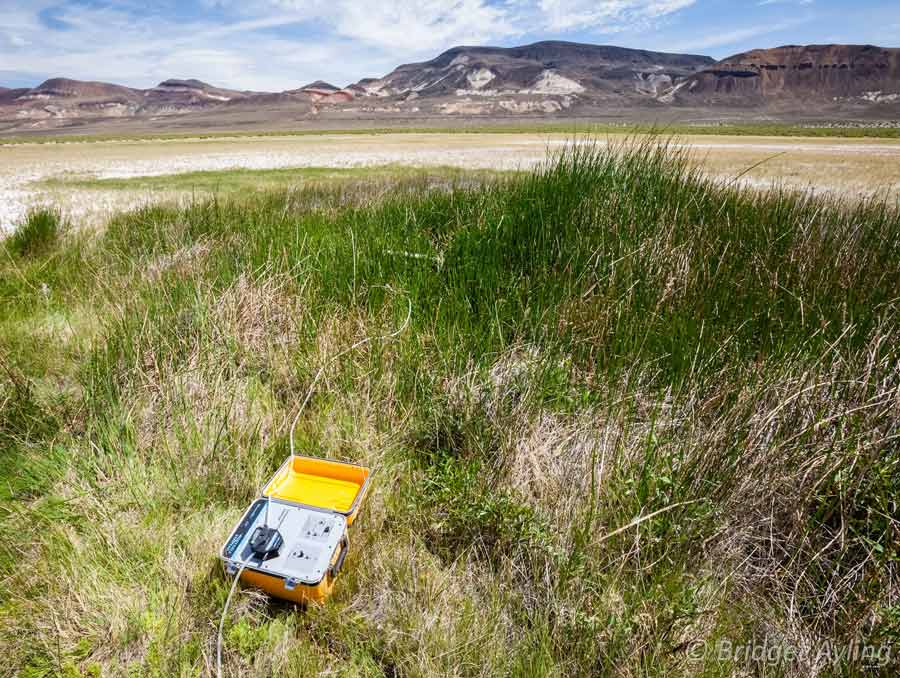It was the first campus town hall meeting of the academic year, a fact not lost on Provost Marc Johnson on Wednesday.
With more than 100 people in the ballroom of the Joe Crowley Student Union and another 170 watching online, Johnson noted that the University of Nevada, Reno had entered a new phase following 18 months of campus discussions centered primarily on budget reductions.
“This year, we’re actually getting to live with a $33 million reduction,” Johnson said, “and we’re discovering that it’s much more difficult to live with a $33 million reduction than to plan for a $33 million reduction.”
And yet, during a far-ranging discussion led by University President Milt Glick and featuring Johnson’s presentation on the University’s strategic plan, there was reason to feel a cautious sense of optimism.
“We’re still doing business,” Glick said, noting how neighboring California’s higher education system has made headlines in recent weeks because of student, faculty and staff protests regarding budget cuts.
Glick credited the campus’ students, faculty and staff for weathering the budget-reduction process in a much more collegial manner.
“The culture of this campus and the willingness to understand that this is a tough time … people are doing their best and being extremely positive about it,” he said. “That’s something special.”
Glick’s remarks at the beginning of the town hall echoed a theme that both he and Johnson stressed throughout.
“There have been a lot of good things that we’ve done,” Glick said at one point. “And, on the other hand, a lot of tough things.”
Glick noted several positives from a mixed bag of University news for the fall semester, including:
? Significant growth in diversity and freshman class academic accomplishment, although overall enrollment was flat. “Our enrollment is flat for this semester,” Glick said, “but for our freshman class, this is our most diverse class ever, and the academic credentials of our freshman are higher than ever.” Glick further noted that the University had achieved an 80 percent retention rate for last year’s freshman class – a record retention rate for the institution.
? Competitive grants higher than ever before, although total research dollars were flat. “Our research, which is about $73 million, is flat from a year ago,” Glick said. “But competitive grants are higher than ever before, and we’re very pleased with that.”
Glick also noted that Faculty Senate Chair Elliott Parker, a professor of economics in the College of Business, had recently completed a study of the University’s budget reductions. Parker’s study found some interesting news, Glick said.
“Elliott found that instructional expenditures this year, compared to last year, were actually slightly up,” Glick said, adding that the institution, through the 15 percent budget reduction process, has increased class sizes but has made sure that student access to the courses they most need to make significant academic progress have not been curtailed.
? Sustainability on the rise on campus. “The (Sustainable Endowments Institute) sustainability report card came out yesterday,” Glick said. “We received a C-minus last year, and a B-plus this year. Only 26 institutions received an A-minus, so we think that’s really good.”
? New Pennington building to help spur medical training consolidation, sense of entrepreneurship on campus. Glick said the new Pennington Health Sciences Building would probably begin construction in November. The project is made possible thanks to the Nevada State Legislature and private donors such as the William Pennington Foundation, which gave a $10 million donation to the University last month, the Nell J. Redfield Foundation which gave a $2.5 million gift and the Thelma B. and Thomas P. Hart Foundation which gave a $1 million gift. When completed, the building will help the University of Nevada School of Medicine and the Orvis School of Nursing produce more doctors nurses and, perhaps just as importantly, train them in the same facility.
Glick said that during last month’s Foundation Banquet, the Pennington Building and its vast potential had grabbed the attention of the banquet’s keynote speaker, Harvard medical professor Dr. Atul Gawande. Gawande, one of the nation’s foremost leaders in health care reform, said he came to Reno expecting to have some fun, gamble a little, and deliver a speech.
“Instead,” Glick quoted Gawande as saying, “I found the future of health science education. It was a ‘duh’ moment. Imagine, training doctors and nurses in the same building.”
“Going forward, our plans are now to move from buildings to people,” Glick said. “We are going to focus on students and faculty and funding for programs. Our priority will be to enhance faculty support and to enhance student support.”
To do this, Glick and Johnson both said the campus will increasingly look to become more entrepreneurial, seeking partnerships in the community and with state programs.
Johnson laid out a compelling vision for how this is to be accomplished, with a short recap of the presentation he will make to the Nevada System of Higher Education’s (NSHE) Board of Regents in December regarding the University’s strategic plan.
The six-year plan, Johnson said, has the potential to eventually grow the University in certain and strategic ways.
“We realize these are difficult economic times for the next two years, maybe the next four years,” Johnson said. “But we also think there is room for improvement and growth.”
As an example, Johnson said the University continues to climb national rankings for the number of National Merit Scholars on campus. This has been an area that Glick, Johnson and others have emphasized, even with declining state support. The results have been encouraging. Just a few years ago, the campus had four National Merit students. That number has grown to 26 this semester. Against 2006 data, the more recent available, this number would rank the University in the top 100 universities in the country.
Johnson said the University’s strategic plan has eight goals to build toward by the year 2015, with the overriding vision being the following:
“The University of Nevada, Reno is an internationally respected, high quality, accessible arts and science university fully engaged with Nevada’s citizens, communities and governments to improve economic and social progress.”
The goals were listed as follows:
Goal No. 1: Be a comprehensive university.
Johnson said this includes not only being a doctoral-granting, research type of institution, but also one that values and grows its student body. He said the institution needs to increase its undergraduate population to more than 15,000, and also needs to raise graduation rates and reduce students’ time to graduation. Graduate school enrollment, he said, must grow to more than 4,000 students.
“We also need to be the university of choice for the high achieving students,” Johnson said. “A growing proportion of our students are ACT 26-plusers, National Merit and Presidential Scholars.”
Again stressing the role of partnerships, both on and off campus, Johnson said the institution will increasingly “focus on sources of external entrepreneurship to grow in a time of budget reductions.”
Johnson also added that a newly established Outreach Council will help the campus coordinate efforts by the colleges and Cooperative Extension to reach out to the University’s various community, state and regional stakeholders.
Goal No. 2: Serve Nevada’s traditional and emerging renewable energy industries.
Goal No. 3: Prepare Nevada for the diversified knowledge economy.
“We want to have all of our graduates enter the workforce fully prepared for the digital age,” Johnson said.
Goal No. 4: Prepare Nevada youth to participate in the world economy.
To this end, Johnson said greater emphasis will be placed on partnering with local school districts and schools “to raise the aspirations of the students as well as the teachers.”
Goal No. 5: Improve the physical and mental health of Nevadans.
Goal No. 6: Enhance sustainable environmental quality in Nevada.
Goal No. 7: Participate in intercollegiate athletics.
“It’s interesting to note that the graduation rate of all of our student athletes exceeds the graduation rate of the average student on our campus,” Johnson said. He added that Nevada is the only school in the Western Athletic Conference to have met all of the academic eligibility standards of the NCAA for the past four years.
Goal No. 8: Build the University’s infrastructure.
“Not only physical infrastructure, but the infrastructure, the support we have for our faculty and students,” Johnson said.
Johnson said the strategic plan “will be accountable.” He then listed more than a dozen categories, from undergraduate enrollment, to graduation rates, where the University will constantly monitor its progress, with results compiled in an annual report.
Glick, who never hesitates to note that he prefers having strategic plans in digestible, smallish bites – small enough to fit on an index card, if possible – smiled broadly as he thanked Johnson and others for the work that had gone into the strategic plan.
“Marc Johnson has worked with a lot of people to flesh out my 2 by 4 card,” Glick said.





